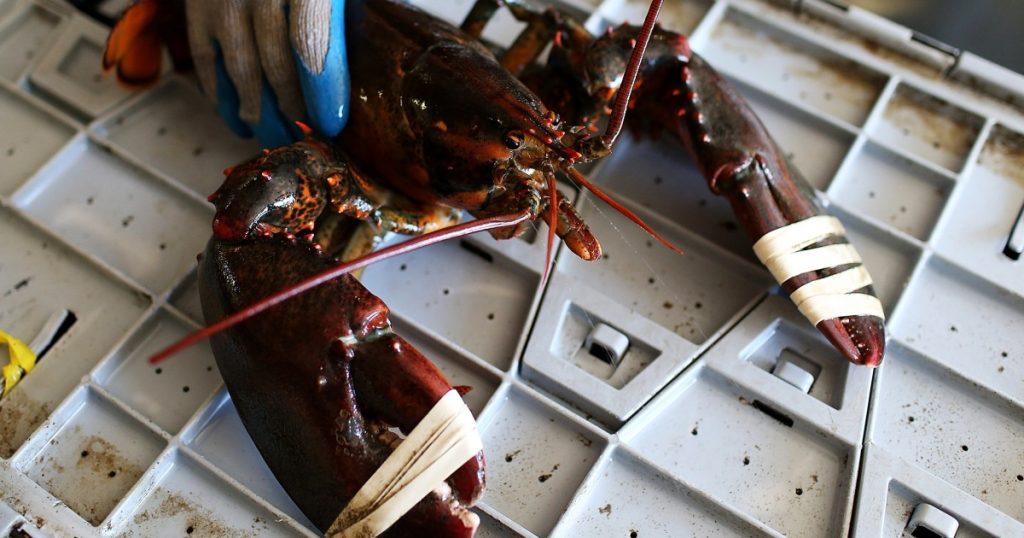The lobster industry in Maine is facing a new rule that requires fishermen to adhere to stricter minimum sizes for the crustaceans they harvest. This minute change, accounting for just 1/16th of an inch or 1.6 millimeters, is causing significant concern among fishermen who are already dealing with challenges from climate change and whale protection rules. The regulation is deemed necessary to preserve the future of the lobster population as the species moves northward due to warming waters. However, the change has led to a dispute between fishermen and regulators, as well as confusion regarding the impact on international trade of one of the world’s most popular seafoods.
Many fishermen are resisting the impending rule change, as they believe even a small alteration could significantly affect their ability to fish and put them at a disadvantage compared to Canada, which follows more relaxed regulations. Concerns have also been raised about potential market saturation in the future as a result of the size adjustment. Recent surveys showing a decline in baby lobsters off Maine have raised alarm bells, with regulators warning that this trend could result in a decrease in adult lobster population. The minimum size change is set to take effect in the Gulf of Maine, a critical lobster fishing region, and could impact the overall lobster catch in the area.
Despite opposition from some fishermen, conservationists are supportive of the changes as they view it as a necessary measure to prevent lobster depletion due to overfishing, especially in light of ongoing climate change impacts in the Gulf of Maine. Scientists emphasize the importance of increasing the minimum gauge size to protect the long-term health and resilience of the lobster population by bolstering spawning stock biomass. The disparity in regulations between the U.S. and Canada has raised concerns about potential market shifts and impacts on trade, with Canadian authorities closely monitoring developments in the U.S. and working to ensure continued market access for Canadian lobster producers in the face of changing regulations.
Canadian officials and trade groups are closely observing regulatory actions in the U.S., particularly in light of the recent approval of measures to prevent the importation of sub-legal lobsters from Canada. There are concerns that inability to sell lobsters to the U.S. may prompt Canadian producers to explore alternative markets, with potential impacts on prices and harvest volumes. While the changes are expected to significantly impact the lobster industry, their effects may not necessarily trickle down to U.S. consumers, depending on factors such as catch volumes and market dynamics. Some scientists and industry analysts support the minimum size change as a necessary step to safeguard the fishery’s future, but the lobster industry, represented by organizations like the Maine Lobstermen’s Association, argues against its necessity at the present time, citing continued uncertainty due to upcoming whale protection rules and the historical high catch volumes.













